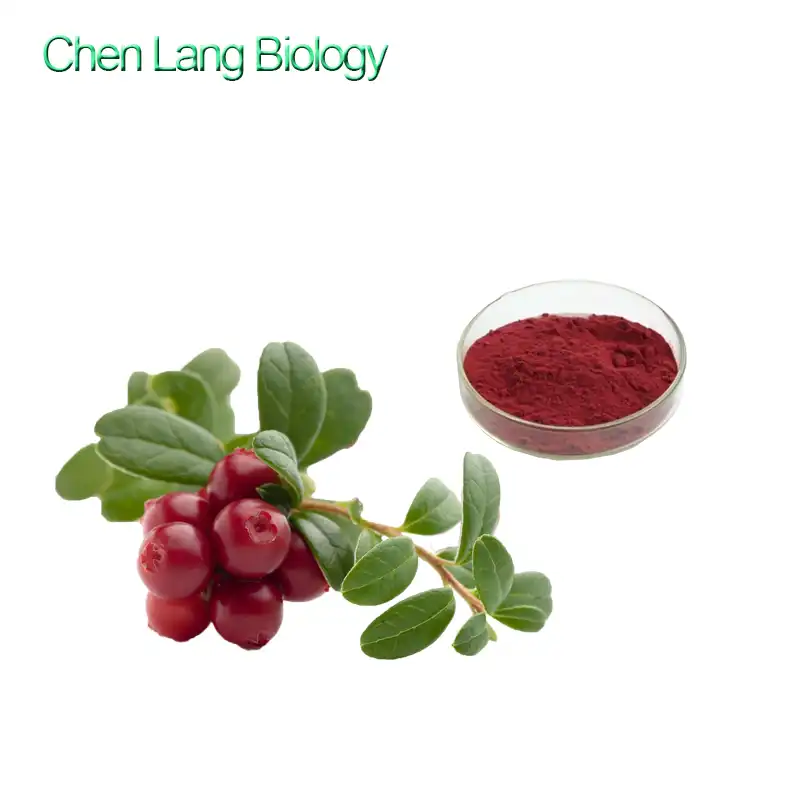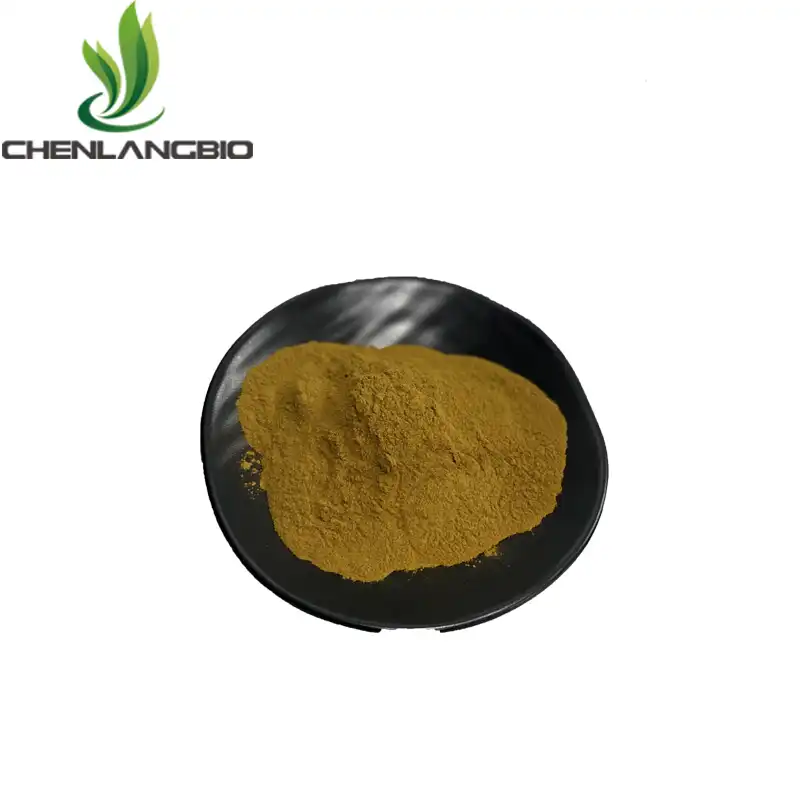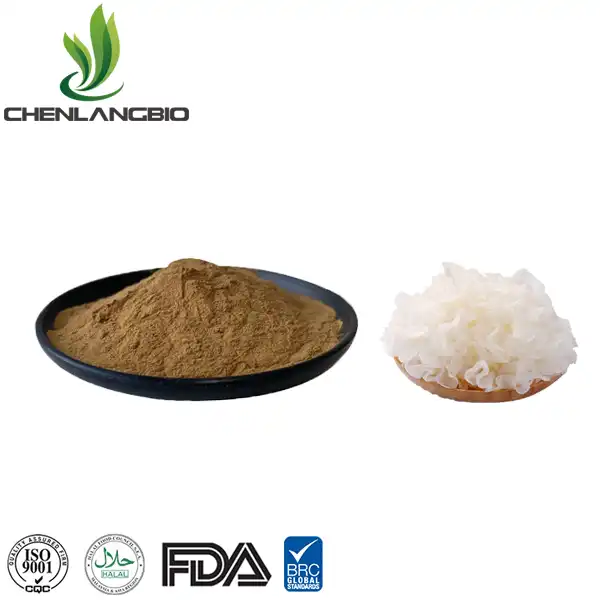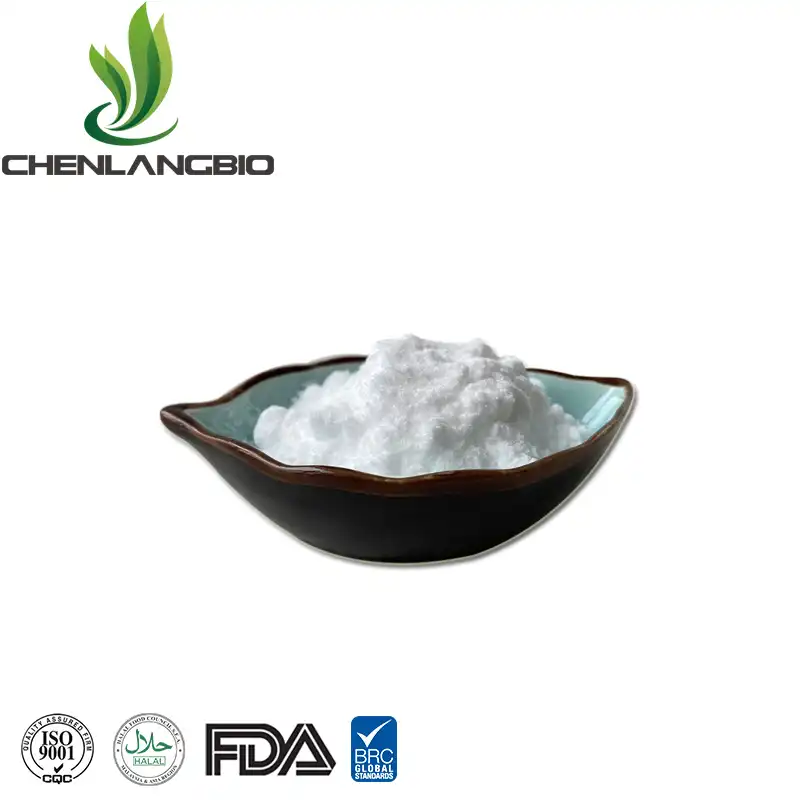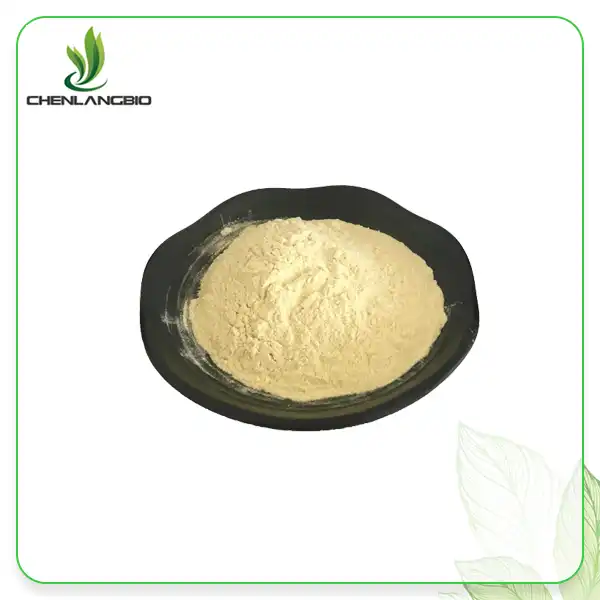What is D-Luciferin Sodium Salt Used for?
2025-04-11 11:08:53
D-Luciferin Sodium Salt stands as a pivotal compound in modern biotechnology research, serving as the cornerstone substrate for bioluminescent reactions. This water-soluble salt form of D-Luciferin is extensively utilized across scientific disciplines due to its remarkable ability to produce light when it interacts with the enzyme luciferase in the presence of ATP. D Luciferin Sodium Salt has revolutionized numerous research fields, from in vivo imaging to drug discovery, by providing scientists with a powerful tool to visualize and quantify biological processes in real-time, making it an invaluable asset in advancing our understanding of living systems.
Applications of D-Luciferin Sodium Salt in Biomedical Research
Bioluminescence Imaging Technologies
D Luciferin Sodium Salt has transformed biomedical research through its application in bioluminescence imaging (BLI) technologies. This non-invasive technique allows researchers to monitor biological processes within living organisms in real-time, providing valuable insights into disease progression and treatment efficacy. When D Luciferin Sodium Salt is introduced into a biological system expressing luciferase, it undergoes oxidation in the presence of ATP and oxygen, resulting in the emission of light that can be detected by specialized cameras. The intensity of this light emission correlates directly with the amount of luciferase present, making it possible to quantitatively track various biological phenomena. For instance, researchers can genetically engineer cells to express luciferase under specific conditions, then use D Luciferin Sodium Salt to visualize these cells within a living organism. This approach has proven particularly valuable in cancer research, where it enables the real-time monitoring of tumor growth, metastasis, and response to therapeutic interventions without the need for invasive procedures or sacrifice of experimental animals at multiple time points. The exceptional sensitivity of D Luciferin Sodium Salt-based imaging systems allows for the detection of even small populations of cells, making it possible to identify metastatic spread at early stages when conventional imaging modalities might fail to detect abnormalities.
Cell Viability and Metabolic Activity Assessment
The relationship between D Luciferin Sodium Salt and cellular ATP levels has established this compound as an essential tool for assessing cell viability and metabolic activity. In living cells, ATP serves as the primary energy currency, with its concentration reflecting cellular health and metabolic status. By coupling D Luciferin Sodium Salt with luciferase in appropriately designed assay systems, researchers can measure ATP levels with remarkable sensitivity and specificity. This capability facilitates the evaluation of cytotoxicity profiles for potential therapeutic agents, the assessment of cellular responses to various stressors, and the monitoring of metabolic alterations associated with disease states. The assay works on the principle that the light emitted from the reaction between D Luciferin Sodium Salt, luciferase, and ATP is proportional to the ATP concentration, which in turn correlates with the number of viable cells. This approach offers significant advantages over traditional viability assays, including higher sensitivity, broader dynamic range, and compatibility with high-throughput screening platforms. Furthermore, the stability of D Luciferin Sodium Salt in aqueous solutions at physiological pH makes it particularly suitable for long-term experiments monitoring cellular metabolism under various experimental conditions, providing researchers with a reliable tool to investigate complex biological processes related to cell death, proliferation, and metabolic adaptation.
Genetic Reporter Systems and Gene Expression Studies
D Luciferin Sodium Salt plays a crucial role in luciferase-based reporter gene assays, which have become indispensable tools in molecular biology and genetic engineering. These systems typically involve integrating the luciferase gene downstream of a promoter of interest, allowing researchers to monitor gene expression levels by measuring the light produced when the expressed luciferase enzyme reacts with D Luciferin Sodium Salt. This approach provides a quantitative readout of promoter activity and transcriptional regulation, offering valuable insights into the mechanisms controlling gene expression. The sensitivity of D Luciferin Sodium Salt-based reporter systems permits the detection of subtle changes in gene expression that might be missed by other methods, making them particularly useful for studying weakly expressed genes or minor alterations in transcriptional activity. Additionally, the rapid kinetics of the luciferase-luciferin reaction enables real-time monitoring of dynamic changes in gene expression, providing temporal resolution that is difficult to achieve with alternative reporter systems. Researchers have successfully employed D Luciferin Sodium Salt in conjunction with luciferase reporters to investigate diverse biological phenomena, including circadian rhythm regulation, stress responses, hormone signaling, and developmental processes. The versatility of this approach extends to high-throughput screening applications, where it facilitates the identification of compounds that modulate specific signaling pathways or transcriptional programs, accelerating drug discovery efforts and enhancing our understanding of complex regulatory networks that control cellular function and development.
D-Luciferin Sodium Salt in Medical Diagnostics and Therapeutics
Oncology Research and Cancer Treatment Monitoring
D Luciferin Sodium Salt has emerged as a powerful tool in oncology research, revolutionizing how scientists study cancer progression and evaluate therapeutic interventions. By genetically engineering tumor cells to express luciferase, researchers can administer D Luciferin Sodium Salt to experimental animal models and track cancer development with unprecedented precision. This non-invasive approach allows for longitudinal studies of the same animal, reducing experimental variability and the number of animals required. The high sensitivity of D Luciferin Sodium Salt-based imaging enables detection of micrometastases that might escape conventional imaging modalities, providing crucial information about cancer dissemination patterns. In therapeutic development, this technology facilitates rapid assessment of treatment efficacy by allowing researchers to monitor changes in tumor burden in real-time. When a therapy successfully eliminates cancer cells expressing luciferase, the bioluminescent signal generated by D Luciferin Sodium Salt decreases proportionally, providing quantitative data on treatment response. This capability has accelerated preclinical evaluation of novel anticancer agents by providing earlier indications of efficacy than traditional endpoints such as survival or tumor size measurement. Furthermore, D Luciferin Sodium Salt-based imaging can reveal heterogeneity in treatment response within different regions of the same tumor or among multiple metastatic sites, offering insights into mechanisms of therapeutic resistance and informing strategies to overcome treatment failures. The combination of D Luciferin Sodium Salt with other imaging modalities, such as magnetic resonance imaging or computed tomography, provides complementary information that enhances understanding of the complex relationships between tumor biology, microenvironment, and treatment response.
Infectious Disease Research and Antimicrobial Development
The application of D Luciferin Sodium Salt in infectious disease research has transformed our understanding of pathogen-host interactions and accelerated the development of novel antimicrobial strategies. By engineering pathogenic bacteria, fungi, or parasites to express luciferase, researchers can use D Luciferin Sodium Salt to visualize infection processes in real-time within living organisms. This approach reveals crucial information about pathogen dissemination, tissue tropism, and replication dynamics that would be difficult to obtain through traditional microbiological methods. The non-invasive nature of bioluminescence imaging with D Luciferin Sodium Salt allows for continuous monitoring of infection progression in the same animal over extended periods, providing insights into the temporal aspects of disease development and resolution. In antimicrobial drug discovery, D Luciferin Sodium Salt facilitates rapid assessment of compound efficacy by enabling real-time visualization of pathogen clearance following treatment. When an antimicrobial agent effectively eliminates luciferase-expressing microorganisms, the bioluminescent signal generated upon administration of D Luciferin Sodium Salt diminishes accordingly, providing a quantitative measure of therapeutic efficacy. This capability has streamlined the preclinical evaluation process for novel antimicrobials, allowing researchers to quickly identify promising candidates for further development. Additionally, D Luciferin Sodium Salt-based imaging can reveal subpopulations of persistent pathogens that survive initial treatment, highlighting potential reservoirs that might contribute to recurrent infections and guiding the development of more effective therapeutic regimens. The sensitivity of this approach also enables detection of low-level infections that might be missed by conventional diagnostic methods, making it valuable for evaluating sterilizing effects of antimicrobial interventions.
Drug Discovery and Pharmacokinetic Studies
D Luciferin Sodium Salt has revolutionized drug discovery processes through its application in high-throughput screening platforms and pharmacokinetic studies. In drug screening applications, researchers utilize reporter cell lines that express luciferase under the control of pathway-specific response elements. When these cells are treated with compound libraries in the presence of D Luciferin Sodium Salt, pathway activation or inhibition can be rapidly detected through changes in bioluminescent output, allowing efficient identification of modulators with desired biological activities. The compatibility of D Luciferin Sodium Salt-based assays with automated screening systems has enabled the evaluation of thousands of compounds in minimally supervised operations, significantly accelerating the early phases of drug discovery. Beyond initial screening, D Luciferin Sodium Salt contributes to understanding drug absorption, distribution, metabolism, and excretion (ADME) properties through innovative applications in pharmacokinetic research. For instance, by conjugating D Luciferin Sodium Salt or its derivatives to drug candidates, researchers can track the compounds' tissue distribution and elimination patterns in real-time using bioluminescence imaging. Additionally, specialized "caged" versions of D Luciferin Sodium Salt that become active only after specific enzymatic processing have been developed to monitor drug metabolism, providing insights into biotransformation processes critical for therapeutic efficacy and toxicity. The temporal resolution afforded by D Luciferin Sodium Salt-based imaging enables detailed kinetic analyses of drug distribution, revealing how quickly compounds reach target tissues and how long they remain at therapeutically relevant concentrations. This information guides dosing regimen design and helps identify potential pharmacokinetic liabilities early in the development process, improving the efficiency of drug optimization efforts and increasing the likelihood of clinical success.
Technical Considerations for D-Luciferin Sodium Salt Applications
Optimal Storage and Handling Practices
Proper storage and handling of D Luciferin Sodium Salt are crucial factors that directly impact experimental outcomes and research reliability. This compound exhibits sensitivity to environmental conditions that can compromise its stability and functionality if not properly managed. D Luciferin Sodium Salt should be stored at -20°C or lower temperatures to prevent degradation, as higher temperatures accelerate breakdown processes that diminish its bioluminescent properties. Light exposure represents another significant threat to compound integrity, as D Luciferin Sodium Salt is photosensitive and undergoes photochemical degradation when exposed to light, particularly in the UV-visible spectrum range. Consequently, storage containers should be opaque or wrapped in light-protective materials, and laboratory handling should occur under reduced lighting conditions whenever practical. When preparing working solutions, researchers should use freshly purified water or appropriate buffers to dissolve D Luciferin Sodium Salt at concentrations typically around 10 mg/mL, though this may vary based on specific application requirements. For applications requiring higher compound solubility, DMSO may be utilized as an alternative solvent, also at concentrations of approximately 10 mg/mL. However, researchers must consider potential biological effects of DMSO when designing experiments, particularly for in vivo applications where solvent toxicity might confound results. Solution preparation should occur immediately before experimental use whenever possible, as D Luciferin Sodium Salt gradually loses activity even in solution under optimal storage conditions. For unavoidable situations requiring advance preparation, aliquoting solutions into single-use volumes and storing them frozen can minimize repeated freeze-thaw cycles that accelerate degradation. Rigorous attention to these storage and handling considerations ensures maximum D Luciferin Sodium Salt performance, enhancing experimental reproducibility and data reliability across diverse research applications.
Quality Control and Purity Requirements
The purity of D Luciferin Sodium Salt significantly influences experimental outcomes, making stringent quality control measures essential for reliable research results. High-grade D Luciferin Sodium Salt, such as that supplied by Xi An Chen Lang Bio Tech Co., Ltd., typically achieves purity levels exceeding 99%, minimizing the presence of contaminants or degradation products that could interfere with bioluminescent reactions or introduce experimental artifacts. This exceptional purity is achieved through sophisticated production and purification processes, including advanced column separation technology, membrane separation systems, and precise crystallization procedures. Quality assessment typically involves multiple analytical techniques including high-performance liquid chromatography coupled with evaporative light scattering detection (HPLC-ELSD) to verify compound identity and quantify impurity profiles. Spectroscopic methods such as ultraviolet-visible spectrophotometry provide additional verification of compound characteristics and concentration accuracy.
Furthermore, atomic fluorescence spectrometry enables detection of potential metal contaminants at extraordinarily low concentrations, ensuring the final product meets rigorous purity standards. Biological activity testing constitutes another critical quality control measure, wherein each production batch undergoes functional verification through standardized luciferase assays to confirm that the compound delivers expected bioluminescent performance. Stability testing under various storage conditions provides valuable information about product shelf-life and appropriate handling recommendations. Researchers should verify supplier certifications such as GMP, ISO9001, FDA, KOSHER, and HALAL compliance when selecting D Luciferin Sodium Salt sources, as these credentials reflect adherence to internationally recognized quality standards. When evaluating potential suppliers, consideration should extend beyond raw purity percentages to include manufacturing consistency, batch-to-batch reproducibility, and comprehensive documentation practices, as these factors collectively determine whether the D Luciferin Sodium Salt will deliver consistent performance across extended research programs.
Optimization for Specific Experimental Systems
Optimizing D Luciferin Sodium Salt usage for specific experimental systems requires careful consideration of multiple parameters to maximize signal intensity, temporal resolution, and biological relevance. Concentration optimization represents a fundamental starting point, as insufficient D Luciferin Sodium Salt levels may limit signal intensity and temporal duration, while excessive concentrations can prove wasteful or potentially introduce artifacts in sensitive biological systems. For in vitro applications, concentration ranges typically span from 100 μg/mL to 1 mg/mL, with precise optimization necessary for each cell type and experimental setup. In vivo applications present additional complexity, requiring consideration of administration route, dosage, and timing relative to imaging. Intraperitoneal injection represents the most common administration route for small animal imaging, typically delivering 150-300 mg/kg of D Luciferin Sodium Salt dissolved in sterile phosphate-buffered saline. Alternative routes including intravenous, subcutaneous, or oral administration may offer advantages for specific experimental questions, though each requires separate optimization of dosing and imaging timing.
Solution pH significantly impacts D Luciferin Sodium Salt stability and reaction kinetics, with slightly alkaline conditions (pH 7.2-8.0) generally providing optimal performance across most applications. Temperature considerations extend beyond storage to include reaction conditions, as the luciferase-luciferin reaction exhibits temperature sensitivity that affects both signal intensity and kinetics. Most mammalian applications achieve optimal results at 37°C, though temperature adjustment may benefit studies involving organisms with different physiological temperature ranges. Signal acquisition timing represents another critical variable, with peak bioluminescence typically occurring 10-20 minutes post-administration for intraperitoneal injections in mice, though this varies based on tissue type, vascularization, and specific experimental conditions. For longitudinal studies, researchers must establish consistent intervals between D Luciferin Sodium Salt administration and imaging to ensure comparable results across timepoints. Advanced optimization approaches include co-administration of enzyme stabilizers or transport enhancers to improve signal characteristics, though such additives require careful validation to avoid introducing confounding variables that might compromise experimental interpretations or biological relevance.
Conclusion
D Luciferin Sodium Salt has established itself as an indispensable tool in modern biotechnology, enabling real-time visualization of biological processes across diverse research fields. Its applications in imaging, diagnostics, and drug discovery continue to expand, driving scientific advancement and therapeutic innovation.
Experience the difference with Xi An Chen Lang Bio Tech Co., Ltd. as your trusted partner for premium-quality D Luciferin Sodium Salt. Our commitment to excellence is reflected in our rigorous quality control, innovative R&D capabilities, and GMP-certified production facilities. We understand your research demands exceptional purity and consistency—that's exactly what we deliver. Our technical team offers personalized support to optimize protocols for your specific applications, ensuring you achieve reliable results every time. Ready to elevate your research with industry-leading D Luciferin Sodium Salt? Contact us today at admin@chenlangbio.com and discover why leading laboratories worldwide choose CHENLANGBIO as their preferred supplier.
References
1. Jenkins, D.E., Oei, Y., Hornig, Y.S., Yu, S.F., Dusich, J., Purchio, T., & Contag, P.R. (2003). Bioluminescent imaging (BLI) to improve and refine traditional murine models of tumor growth and metastasis. Clinical & Experimental Metastasis, 20(8), 733-744.
2. Luker, G.D., & Luker, K.E. (2008). Optical imaging: current applications and future directions. Journal of Nuclear Medicine, 49(1), 1-4.
3. Contag, C.H., & Bachmann, M.H. (2002). Advances in in vivo bioluminescence imaging of gene expression. Annual Review of Biomedical Engineering, 4(1), 235-260.
4. Roda, A., Guardigli, M., Michelini, E., & Mirasoli, M. (2009). Bioluminescence in analytical chemistry and in vivo imaging. TrAC Trends in Analytical Chemistry, 28(3), 307-322.
5. Fan, F., & Wood, K.V. (2007). Bioluminescent assays for high-throughput screening. Assay and Drug Development Technologies, 5(1), 127-136.
6. Keyaerts, M., Caveliers, V., & Lahoutte, T. (2012). Bioluminescence imaging: looking beyond the light. Trends in Molecular Medicine, 18(3), 164-172.


